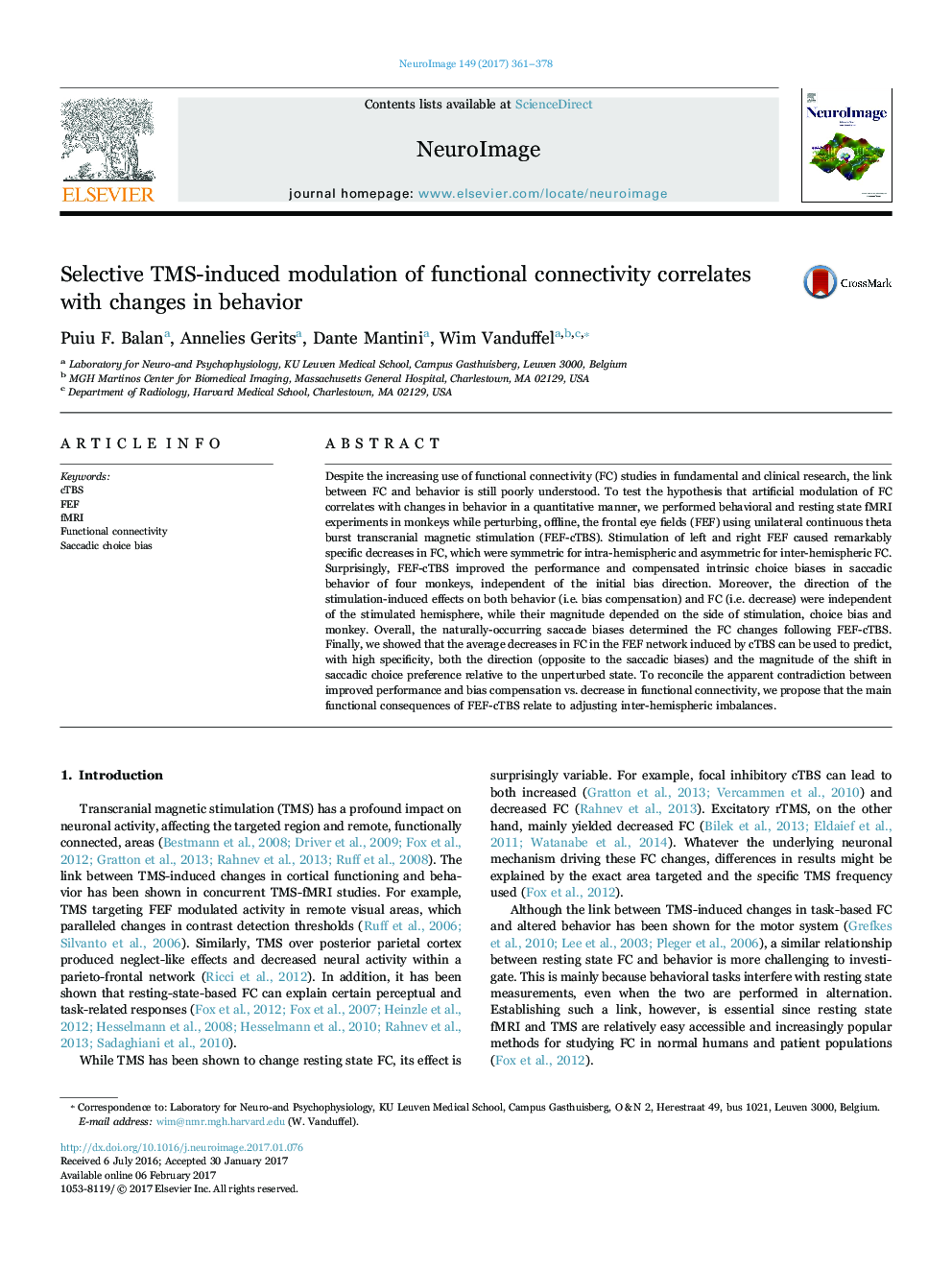| Article ID | Journal | Published Year | Pages | File Type |
|---|---|---|---|---|
| 5631259 | NeuroImage | 2017 | 18 Pages |
â¢We perturbed the FEF in monkeys using unilateral cTBS (FEF-cTBS).â¢We investigated its effect on resting state fMRI and a delayed-memory saccade task.â¢FEF-cTBS improved performance and compensated intrinsic saccadic choice biases.â¢FEF-cTBS caused network-specific decreases in functional connectivity (FC).â¢FEF-cTBS induced modulation of FC correlates with changes in behavior in a quantitative manner.
Despite the increasing use of functional connectivity (FC) studies in fundamental and clinical research, the link between FC and behavior is still poorly understood. To test the hypothesis that artificial modulation of FC correlates with changes in behavior in a quantitative manner, we performed behavioral and resting state fMRI experiments in monkeys while perturbing, offline, the frontal eye fields (FEF) using unilateral continuous theta burst transcranial magnetic stimulation (FEF-cTBS). Stimulation of left and right FEF caused remarkably specific decreases in FC, which were symmetric for intra-hemispheric and asymmetric for inter-hemispheric FC. Surprisingly, FEF-cTBS improved the performance and compensated intrinsic choice biases in saccadic behavior of four monkeys, independent of the initial bias direction. Moreover, the direction of the stimulation-induced effects on both behavior (i.e. bias compensation) and FC (i.e. decrease) were independent of the stimulated hemisphere, while their magnitude depended on the side of stimulation, choice bias and monkey. Overall, the naturally-occurring saccade biases determined the FC changes following FEF-cTBS. Finally, we showed that the average decreases in FC in the FEF network induced by cTBS can be used to predict, with high specificity, both the direction (opposite to the saccadic biases) and the magnitude of the shift in saccadic choice preference relative to the unperturbed state. To reconcile the apparent contradiction between improved performance and bias compensation vs. decrease in functional connectivity, we propose that the main functional consequences of FEF-cTBS relate to adjusting inter-hemispheric imbalances.
